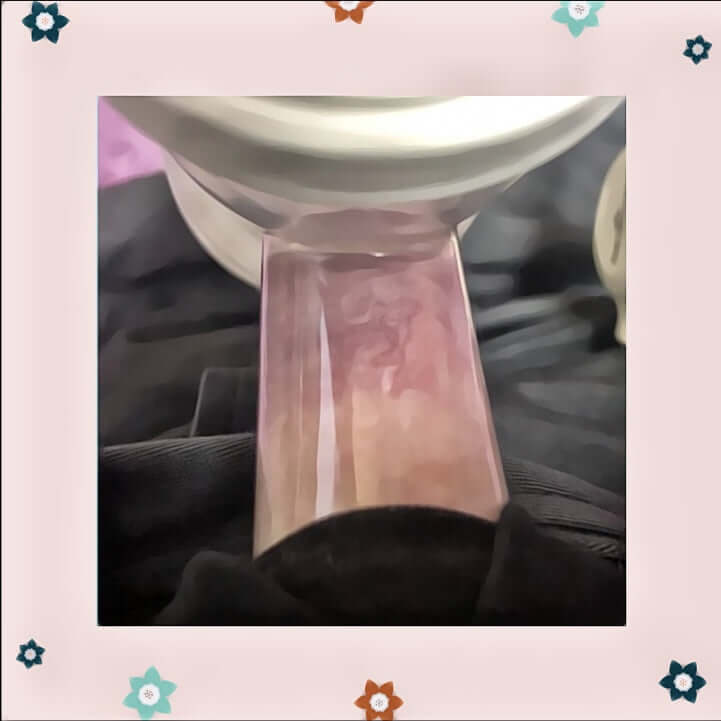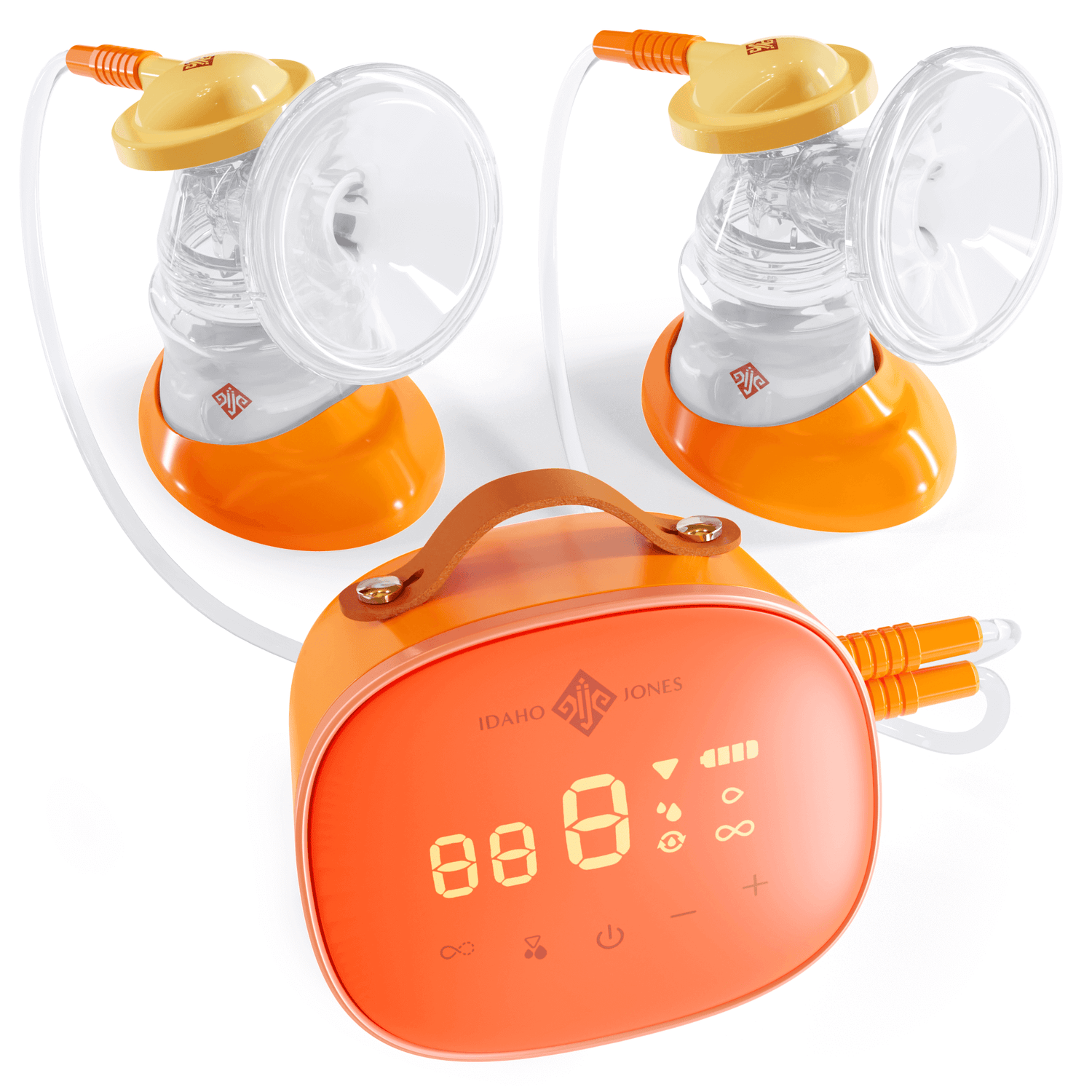
What is an Elastic Nipple?
Share
A Comprehensive Guide to Understanding, Coping, and Solutions for Nursing Mothers
Embarking on the journey of breastfeeding is often filled with a mix of excitement, anticipation, and often, questions. One term that frequently leaves mothers curious and sometimes even bewildered is "elastic nipples." What exactly are they? How do they affect breastfeeding or pumping? And how can you navigate the challenges they might pose? In this comprehensive guide, we explore these questions and more, leveraging the insights from reliable sources, up-to-date research, and innovative solutions that have proven effective.
Understanding Elastic Nipples
Elastic nipples refer to nipples that, during breastfeeding or pumping, stretch significantly - up to three times their original length (source: KaringforPostpartum). But how does this stretching play out, and how can you tell if you have elastic nipples?
Identifying Elastic Nipples
A straightforward way to identify elastic nipples is during a pumping session. If your nipples extend all the way to the end of the flange tunnel when pumping, you likely have elastic nipples. Another key indicator is if the nipple stretches up to three times its original length. If you're unsure, consulting with a lactation expert can help.
Implications of Elastic Nipples
The excessive stretching characteristic of elastic nipples can cause discomfort, pain, and even potential damage during nursing or pumping sessions. The face of the nipple continually hitting the end of the flange tunnel can lead to bruising, tenderness, and in some cases, damage to the nipple. Moreover, the excessive stretching can pull in more of the areola, which can lead to compression of milk ducts. This compression can cause milk supply issues, as it can impede the flow of milk during breastfeeding or pumping.
Coping with Elastic Nipples: Key Strategies
Despite the challenges posed by elastic nipples, there are effective strategies and tools that can make breastfeeding and pumping more comfortable and efficient.
- Mind the Suction Level: Start at a lower suction level and increase it gradually. This approach can help minimize excessive stretching caused by high suction levels.
- Embrace Hands-on Pumping: Applying compression and massaging your breasts while pumping can stimulate better milk flow and reduce the strain on your nipples.
- Short, Frequent Pumping Sessions: Reducing the length of pumping sessions can lessen the stretching and discomfort, and help maintain your milk supply.
"Breastfeeding is a unique journey for every mother. It's about finding what works best for you."
Choosing the Right Flange
The importance of finding the right flange for mothers with elastic nipples cannot be overstated. A flange that accommodates the dynamics of elastic nipples can significantly reduce discomfort and increase the effectiveness of pumping sessions.
Flange Options for Elastic Nipples
- Lacteck Flanges: These flanges adapt to the changing shape and elasticity of the nipples, enhancing comfort during pumping.
- Pumpin Pals Flanges: With an angled design, these flanges provide a more comfortable pumping position and allow the nipple to move freely, minimizing discomfort.
- Idaho Jones Cushy Silicone Flanges: The game-changer in the world of breast pumps. Made from soft, flexible silicone, these flanges offer an adaptive fit that prevents excessive stretching, keeping the nipple and areola in their proper place. The silicone compresses to accommodate the stretching, providing an effective and comfortable pumping experience.
A Note of Caution: Flange Size Matters
While finding the right flange, be cautious of recommendations to increase flange size. Sometimes, lactation consultants who aren't familiar with elastic nipples might interpret the sides of the nipples rubbing against the sides of the tunnel as a sign that the flange is too small. However, a larger flange can exacerbate the situation by pulling more of the nipple and areola into the tunnel, potentially causing more damage.
|
|
Lacteck |
Pumpin Pals |
Idaho Jones Cushy Silicone Flanges |
|
Ease of Use |
Good |
Good |
Excellent |
|
Transparency |
Good |
Good |
Excellent |
|
Weight |
Heavy |
Medium |
Light |
|
Effectiveness |
Good |
Good |
Excellent |
|
Learning Curve |
Moderate |
Moderate |
Easy |
As evident from the table, the Idaho Jones Cushy Silicone Flanges stand out as the clear winner. They offer optimal comfort, efficiency, and ease of use, making them an ideal solution for mothers with elastic nipples.
The Role of Lubrication
Even with the perfect flange, using lubrication can add an extra layer of comfort to your pumping sessions. A thin layer of coconut oil or a water-based lubricant can reduce friction between your nipple and the flange, further reducing the risk of discomfort or damage.
The Journey Ahead: You're Not Alone
Understanding and managing elastic nipples might seem overwhelming, but remember, you're not alone. Numerous mothers face this challenge and successfully navigate it with the right information, support, and tools. And with innovative solutions like Idaho Jones Cushy Silicone Flanges, the journey becomes significantly smoother. Breastfeeding is a beautiful, bonding experience, one that shouldn't be marred by discomfort or pain. With understanding and effective strategies, you can ensure that your breastfeeding or pumping journey is comfortable and rewarding.
References:

